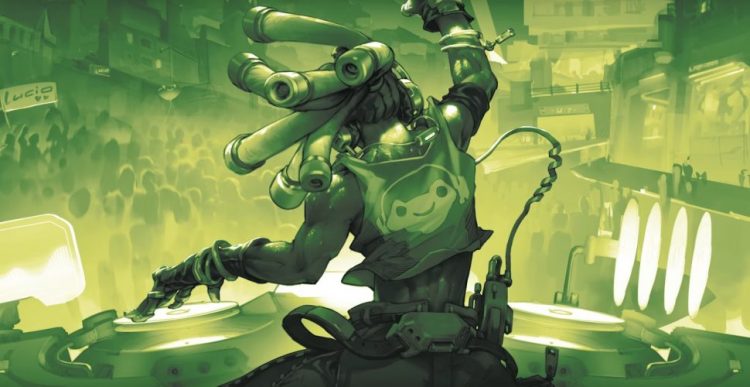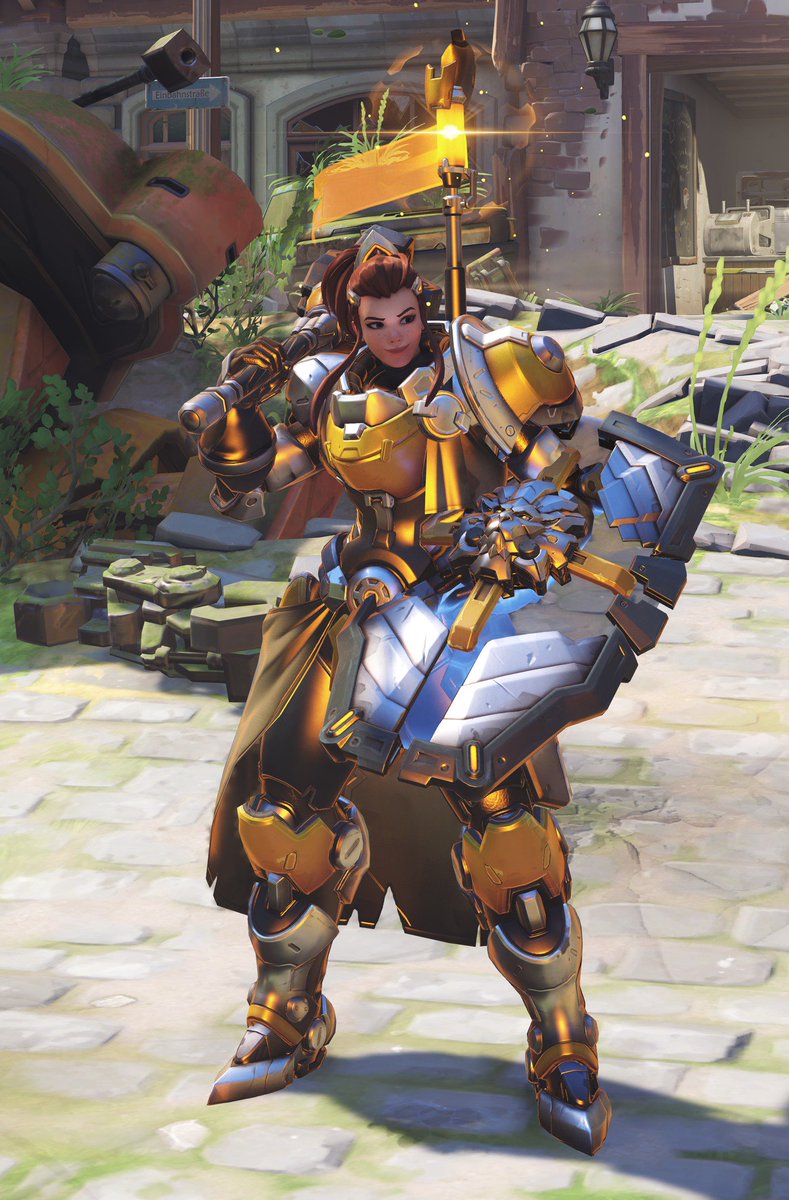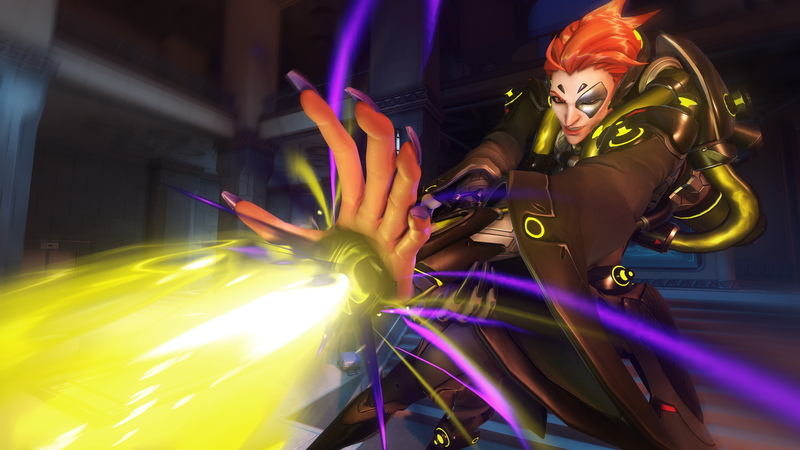It’s time to continue on to Dungeons & Dragons and Overwatch Part 2. If any readers have not already read the first segment of this two-part series it’s highly recommended that they check that one out first for a basic introduction on how these articles are set up.
Part 1 dealt primarily with the melee classes of D&D, whereas this part covers the more magically-based classes of the tabletop game. Without further ado, it’s time to dive into the other six classes of Dungeons and Dragons and figure out which Overwatch character best represents each.
Bard: Lucio

The comparison between Lucio and the Bardic class may be the most obvious one on either of these lists. Both bards and Lucio use music in order to achieve their spells or effects; they are also both adept at being extremely social. Bards are typically the face of the party, pushing everyone forward and also supporting them from the mid-line. Lucio too functions best when surrounded by his whole team, speeding or healing them. However, Lucio can sustain himself on his own as well to set up nasty flanks, and Bards too are well-rounded enough to fulfill various roles.
Ability-wise, Lucio’s Crossfade can be swapped between healing or speed boosting, which matches a Bard’s affinity for buffing or healing their companions in battle. Bards are also quite skilled at debuffing opponents, which Lucio too excels at with his Soundwave attack, which can displace or even kill enemy players. Lucio can also wall ride, which matches the unique creativity in Bard spells to allow them to traverse terrain in unique ways. Both are also very easy for newcomers to grasp and provide a lot of gameplay variability. If a Lucio main is reading this and wants to get into D&D, then a bard couldn’t be a better choice of class.
Cleric: Brigitte

Move over Mercy, Brigitte is the true Cleric of Overwatch. This may be a hot take, but while Mercy is usually called the Cleric of the Overwatch universe, in honesty Brigitte’s functions are more akin to a 5e Cleric. This is largely due to Clerics’ proficiency in armor and shields, items that Brig wields but Mercy does not. Clerics in D&D share much in common with Paladins, following their higher faith, with the main difference between them being a higher focus on spellcasting from Clerics. Brig herself takes after her mentor Reinhardt, and this connection should be recognized in this comparison. Clerics do have the ability to resurrect compatriots, but Brig’s other abilities more than compensate.
Unlike some healers in Overwatch, clerics focus on overall utility and even damage rather than just heals. Shield of Faith is representative of her shield as a whole, and Inflict Wounds is her mace attack. The armor packs she give out are akin to several spells, and can be seen as either the cantrip Mending, or the basic heal spell Cure Wounds. Brig’s Shield Bash and Whipshot aren’t strictly like any cleric spells, but both consist of the weapons she uses to do melee attacks. Brigitte’s ultimate is also akin to the spell Mass Healing Word, where a shouted word of restoration heals all allies in her range, very similar to how Rally functions. Many players are initially turned off from the idea of clerics, fearing they’ll be stuck healing nonstop. However, with the knowledge that Brigitte functions like a cleric maybe this will change some outlooks on it.
Druid: Mei

Druids usually consist of one part healer, one part natural spellcaster, and the other parts all go into their health bar. They don’t have the highest damage output but are solid mid-liners and very difficult to kill off. For this reason, Mei would be the prime example of a druid. Mei has a large amount of health, and can even restore her health, making her difficult to kill one-on-one. She also focuses on crowd control with her abilities, something a Druid does very well in combat. Mei’s abilities all relate to ice, and one of the circle of the land druid builds focuses on the arctic; this type of druid favors icy habitats and has some unique cold-magic spells only they can learn.
In terms of spells, Mei’s toolkit mirrors several spells Druids can learn while leveling up. Ice Knife is a very good stand in for her alternate fire, flinging a single frozen projectile at enemies. Meld into Stone or similar self-transfiguration spells like Barkskin function like her ice block does. Druids can learn several earth manipulation spells, as well as several wall spells that create walls of elements to block enemies; sadly ice is not one of these, but water, fire, and thorns are alternatives. Finally, Investiture of Ice is an advanced Druidic spell, one that mirrors her ult by throwing a full snowstorm around her and freezing enemies within that radius. If any Mei fans want to have fun outliving their enemies and using the magic of nature, Druid is the class for them.
Sorcerer: Moira

The last three classes on this list are the most magic-heavy of all the D&D classes; the Sorcerer class serves as the easiest and most well rounded of the three to get into. They have more offensive capabilities than Wizards but less support utility, yet are more manageable than Warlocks. So to match a character of this mixed caliber, Moira was the ultimate call. Sorcerers are best in the midline with their tiny health pool, but can be very powerful supports when protected. Moira players also know that while 1v1’ing a DPS can be fun, they will typically be punished for doing so.
While sorcerers typically have vastly more options than Moira does, the toolkit is slightly more akin than one might realize. Some spells focus on small but meaningful damage, such as Magic Missile, which never misses. Biotic Grasp from Moira similarly does not have an accuracy factor. Sorcerers themselves have very little healing, but a wide range of support and buffing spells. Moira’s fade ability also resembles spells like Gaseous Form that sorcerers use to escape combat. Her ultimate, Coalescence, resembles several of the beam-like spells this class can wield, most notably the 6th-level spell Sunbeam. Moira’s power of science gives her the unmistakable ability to wield powers just like a D&D sorcerer would; given her affinity for nerd culture this fact may be less surprising than one might think.
Warlock: Symmetra

Warlocks are typically one of the most aggressive magic users; they cannot cast advanced spells often but these spells are primarily for damaging or controlling enemies. A lot of the DPS heroes of overwatch could potentially take on this role with their CC abilities; Ashe’s Dynamite, Torbjorn’s Turret, and McCree’s Flashbang all would fit this. However, in the end, the best call was to go with Symmetra as Overwatch’s Warlock. She works as a DPS whose primary goal is to cause a disturbance to the enemy team by hitting hard; she isn’t the most adept at escaping combat and usually will need other heroes to back her up. Such is the way of the Warlock, not the best alone, but in a well-rounded team can wreak absolute havoc.
Symmetra also has abilities quite akin to that of a Warlock. Her turrets are capable of slowing down enemies and providing crowd control, like several spells Warlocks learn. Members of this class can also cast Dimension Door at level 7, which functions exactly like Symm’s Teleporter does, linking two distance points in an instant for use of the whole party. Her beam itself even works like a small Eldritch Blast, the most recognized warlock spell ability because it doesn’t require a spell slot to use. Most of these abilities also have sizable cooldowns, an issue many warlocks have to deal with. While Warlocks may not be able to use spells as often as Symm can use her abilities, she’s still a good stand in for a Warlock in the Overwatch universe.
Wizard: Ana/Zenyatta

The final class of this series, there are no better matches for a Dungeons and Dragons Wizard than Ana and Zenyatta. Wizards have minimal attack and defense and thus need to hide in the back of the party. They make up for this however by being dominant at utility, buffing, debuffing, and world manipulation alike. They make excellent supports as a result, and thus support mains would make excellent Wizards in return. Players familiar with these two supports, who have to rely on protection from the party and taking cover should find familiarity with this role. Both are also difficult to master effectively, and D&D players can attest the same for Wizards; despite having sometimes simple abilities, it takes a lot to make them work to the fullest. Ana and Zenyatta do have different functions, but between the two they both make up one solid spellcaster.
Wizards can learn the most possible spells of any class in the game, probably enough to represent every ability in Overwatch. There’s nearly too many spells to count. However, most notable for this comparison are the spells Sleep, Bestow Curse, Haste and Leomond’s Tiny Hut. The main difference with Sleep is in D&D it affects a large group of people, yet functionally it’s the same. Bestow Curse can have several effects, but it can deal damage or cause disadvantage, like Ana’s Bio-nade or Zen’s Discord Orb. Haste is a spell that powers up an ally, and Leomond’s Tiny Hut creates a protective space for the party. These reflect both of these heroes’ ultimate abilities. For the support player who wants to control an entire battlefield, the Wizard class is the right choice.
Summation
This concludes the Dungeons and Dragons and Overwatch series; hopefully these two pieces were as enjoyable to read as they were to write. Obviously these won’t be everyone’s first choices for these roles, and not everything fits perfectly. So make sure to leave a comment saying what changes you might make if you could compare each D&D class to an Overwatch hero. Thanks once again for reading and make sure to stop by for more content in the future!
You can ‘Like’ The Game Haus on Facebook and ‘Follow’ us on Twitter for more sports and esports articles
For more from Ethan make sure to follow him on Twitter! Also be sure to check out the Game Haus YouTube channel for more appearances from him!!
“From Our Haus to Yours”